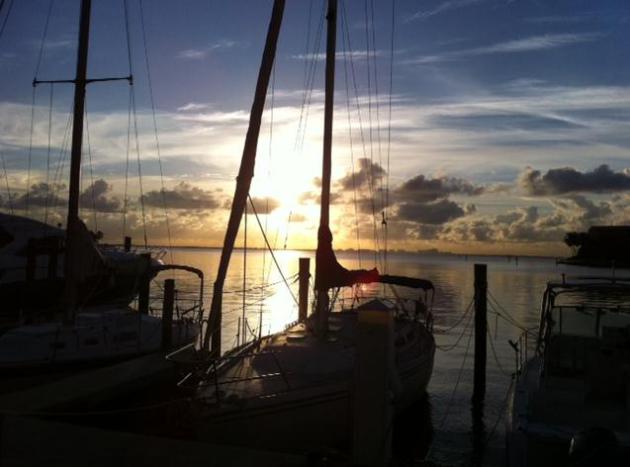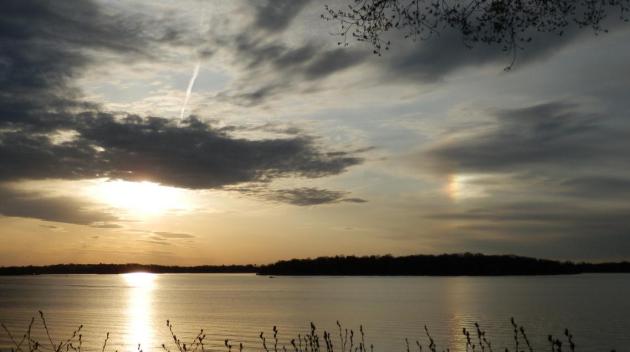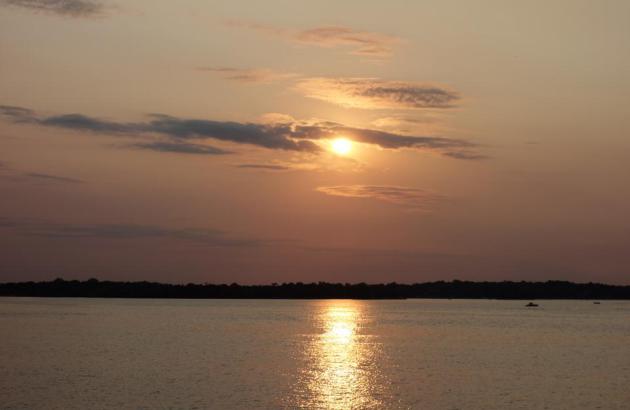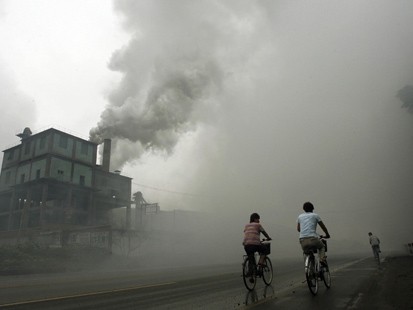83 F. average high on July 26.
87 F. high on July 26, 2015.
July 27, 1910: Giant hailstones fall in Todd and Wadena Counties. One stone weighed in at 5 pounds.

Puddle Potential Today - Then Cooling Off
“Learning and innovation go hand in hand. The arrogance of success is to think that what you did yesterday will be sufficient for tomorrow” wrote William Pollard.
I just discovered that 88 percent of Fortune 500 companies around in 1955 no longer exist. The treadmill of innovation, computerization and creative destruction is increasing. Today's students need skills to succeed in jobs that don't even exist yet.
The reality: what worked in the 1980s probably won't work in the 2020s. It's a tough lesson, but if you don't disrupt yourself - someone will be happy to do it for you.
Computers have disrupted meteorologists with a need for fewer people, as access to data has increased exponentially.
A consensus of weather models predict heavy showers and T-storms today, followed by welcome cooling later in the week (highs in the 70s). A warm, quiet, drama-free weekend gives rise to more heat next week; a few more days in the 90s as early as Monday.
I'm not yet convinced we'll see an extended August heat wave; NOAA models bring a parade of cooler fronts into town within 1-2 weeks.

Out of Control Wildfire Grows to More Than 33,000 Acres in Santa Clarita Valley. My oldest son, Walt, snapped the photo above as his flight was leaving Los Angeles Sunday evening. Here's an excerpt from The Los Angeles Times: "The brush fire raging in the rugged mountains of the Santa Clarita Valley grew by more than 10,000 acres on Sunday, scorching an estimated 33,172 acres by the late evening as the blaze continued to threaten hundreds of homes while firefighters battled to keep flames from spreading, authorities said. Fueled by 20-mph winds and hillsides carpeted with tinder-like chaparral, the wildfire was burning in hills toward Acton by late Sunday afternoon. Hundreds of residents were ordered to evacuate..."
.jpg)
Your Air Conditioner is Making the Heat Wave Worse. Here's an excerpt from a Washington Post explainer: "...Between 1993 and 2005, when the increase in house size was reaching its zenith, total consumption of electricity for residential air conditioning nearly doubled, from 134 billion kilowatt-hours to 261 billion, according to U.S. Energy Information Administration surveys. The Energy Department says air conditioners use about 5 percent of all the electricity produced in the country each year, costing homeowners more than $11 billion. It’s not too late to reduce our dependence on air conditioning, especially in rural areas, small towns and leafy suburbs. Even in big cities, homeowners can plant shade trees and other vegetation, install whole-house fans, sleep in the basement..."
Photo credit: "Barrels of radioactive waste in the Asse II storage cavern in 1975". View gallery. Photo: Federal Office for Radiation Protection.
Despite Roadblocks for Tesla, Elon Musk Is Moving Full Speed Ahead. Here's a clip from a New York Times article: "...Jeff
Nesbit, former head of legislative and public affairs at the National
Science Foundation under Presidents Obama and George W. Bush, said
Tesla’s value could also be measured by the pressure it places on other
car companies to match it. “He’s driving everybody else,” Mr. Nesbit
said. “That’s the power Musk has.” Utilities, whatever their
resentments, are paying attention, too. “Elon is truly the archetype of
the disruptive entrepreneur,” said Andrew Beebe, a former electric
industry executive who is now a venture capital investor. “Utilities and
utility executives, because of the success on the vehicle side, are
absolutely taking note...”
Photo credit: "The
site of the Tesla Gigafactory, which the company says will eventually
put out more lithium-ion batteries each year than were produced globally
in all of 2013." Credit Jason Henry for The New York Times.
The End of Advertising, As We Know It. The disruption continues - here's an excerpt of a fascinating article at MediaPost: "Eighty-eight
percent of Fortune 500 companies that were around in 1955 no longer
exist today. Industries get disrupted. How’s that working out for
advertising? Until relatively recently, the ad industry has been
dominated by the same media that dominated it in 1955: print, radio and
TV. Only TV still dominates today, but its grip on media buyers is
slipping. It’s hanging on by its fingernails. That’s about to change.
Cataclysmic forces are shifting corporate culture and disrupting pent-up
organizational malaise..."
The Best Reason to Ride a Bike. Here's an excerpt from YES! Magazine: "...it
turns out that biking is actually significantly safer than driving. One
statistical study found that a modest bike commute adds 90 to 420 days
of life expectancy from increased cardiovascular health, while the
increased risk from accidents subtracts only five to nine days. Other
studies find the effect to be even greater. Still, in the United States
we could easily improve both safety and perceived safety for bicyclists.
A relatively modest investment in real bike infrastructure—a network of
bike lanes and bike paths connecting schools, transit hubs, and
workplaces—would make biking feel safer; and when biking feels safer,
more people ride..."
Photo credit: "Aline Cavalcante rides in São Paulo, Brazil." Photo by Rodrigo Marcondes.

Photo credit: "Manitoba's Dorothy Lake, one of the 10% of the province's lakes that do have an official name." (Photo: Robert Nunnally/CC BY 2.0).

TODAY: Showers and T-storms. Winds: SW 5-10. High: 82
WEDNESDAY NIGHT: Another T-storm. Low: 65
THURSDAY: A bit cooler, isolated shower possible but a drier day. Winds: NE 7-12. High: 79
FRIDAY: More sunshine, fairly comfortable. Winds: E 7-12. Wake-up: 62. High: 80
SATURDAY: Plenty of lukewarm sunshine. Winds: SE 7-12. Wake-up: 63. High: 82
SUNDAY: Lot's of sunshine, warmer. Winds: SE 7-12. Wake-up: 67. High: 86
MONDAY: Hazy sun, muggy again. Winds: S 8-13. Wake-up: 70. High: 90
TUESDAY: Steamy sun, few strong T-storms. Winds: S 10-15. Wake-up: 75. High: 92
Climate Stories...

How Climate Disasters Can Drive Violent Conflict Around the World. In the words of the U.S. Department of Defense: climate change is a threat multiplier. It aggravates and accelerates other problems, including access to water and the ability to consistently grow crops. By turning up Earth's thermostat we're making it more challenging for a BAU (business as usual) existance. Here's an excerpt from The Washington Post: "It’s increasingly clear that the consequences of climate change won’t stop at just heat waves and sea-level rise. Scientists expect numerous social issues to arise around the world as well, such as food shortages, decreased water quality and forced migrations. And many experts now say that violence, war and other forms of human conflict may be driven or worsened by the effects of climate change. A new study, published Monday in the journal Proceedings of the National Academy of Sciences, lends support to the growing body of evidence behind this idea. The study finds that climate-related disasters may enhance the risk of armed conflict around the world — specifically in countries with high levels of ethnic divides..."
Changing Minds About Climate Change. Here's a snippet of an interesting post at Nexus Media: "...Monday
morning quarterbacking is virtually a national pastime whether it be
sports or public policy, but when these discussions flout the data and
invoke conspiracy theories on a subject of such central and urgent
importance, they can safely be classified as reckless. It is morally
indefensible to use climate change as a wedge issue. Beyond the
subversion of science and the political posturing, there is another
insidious source of the misalignment between climate science and public
perception of climate change: humans are simply not good at assessing
long-term risk. We routinely underestimate threats that creep up on us.
Unless there is an immediate negative consequence, we will often march
straight into danger..."
Graphic credit: "Observed
warming (black line) and projected warming (colored lines) under four
emissions scenarios. The bars at right show the possible range in
temperature for each scenario." Source: IPCC

Sizzling Midwest Feels a Preview of a Hotter Future Climate. InsideClimate News offers up some perspective: "Extreme
heat waves like the current string of scorching days in the Midwest
have become more frequent worldwide in the last 60 years, and climate
scientists expect that human-caused global warming will exacerbate the
dangerous trend in coming decades. It comes with potentially
life-threatening consequences for millions of people. Research has shown that overall mortality increases by 4 percent during heat waves compared to normal days in the U.S. A study in the journal Environmental Health Perspectives in 2011
suggested that rising summer temperatures could kill up to 2,200 more
people per year in Chicago alone during the last two decades of the 21st
century..."
Map credit: "This June was the hottest ever, and July has brought even more heat, particularly in the Midwest." Credit: NOAA.
Photo credit: "A man walks through a dried-up Sarkhej lake on a hot summer day in Ahmedabad, India, April 21, 2016." Reuters/Amit Dave/File Photo.
Life On The Front Line of Climate Change. Here's an excerpt from Horizon Magazine: "...Observations show that the Arctic is warming twice as fast as the rest of world; an alarming trend given its understood role as the world’s barometer of environmental health. Its summer sea ice cover has decreased by about 50 % since the late 1970s, a loss larger than the landmass of India. With sea ice loss outstripping modelled predictions and complete summer loss being a realistic possibility within decades, ICE-ARC is also working to better understand the local and global economic impact of this. The researchers are using their understanding of community vulnerabilities and resilience, along with data collected from sources including autonomous robot platforms, data-sampling buoys and submersibles, to predict what physical and living marine resource changes can be expected — and how fast..."
Photo credit: "Measurement tools on dog sleds will tell researchers and the local Inuit population the ice thickness in northwest Greenland." Image courtesy of ICE-ARC.
No comments:
Post a Comment